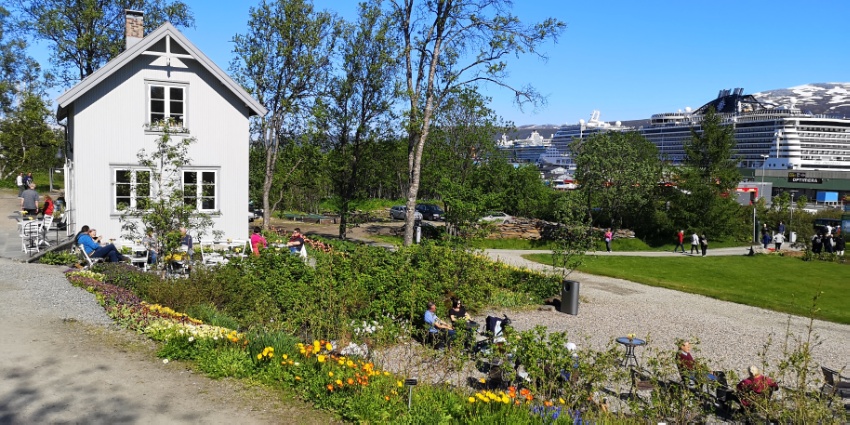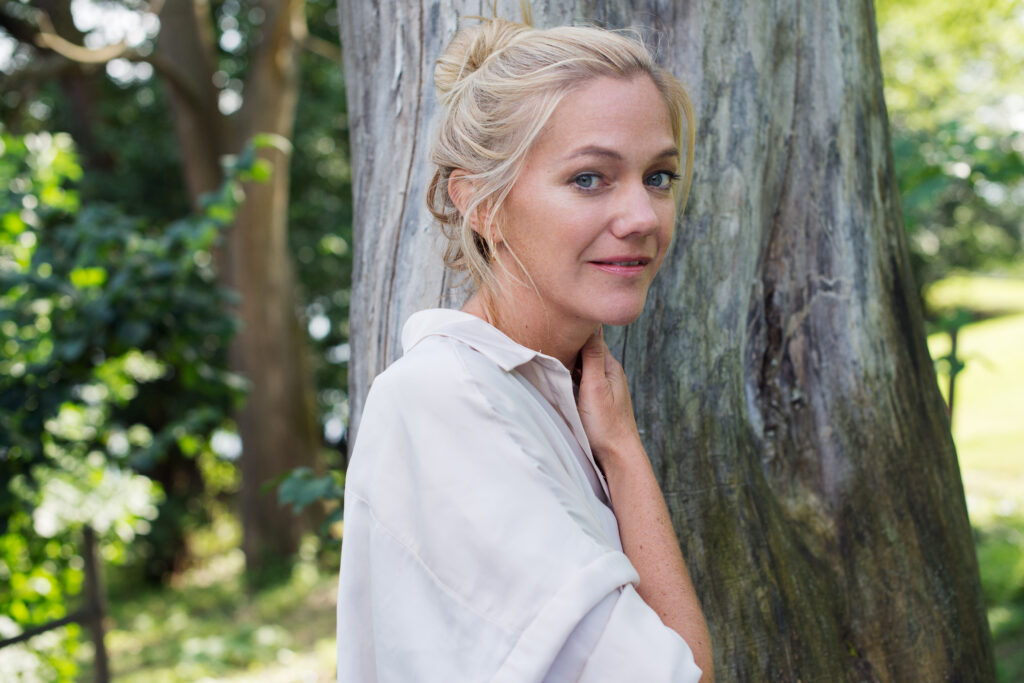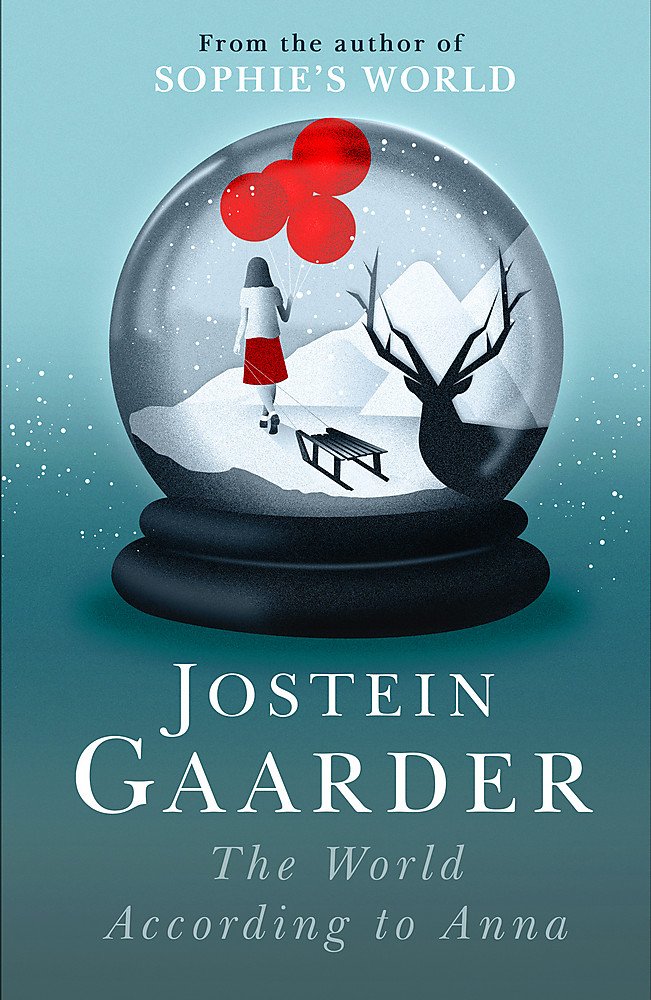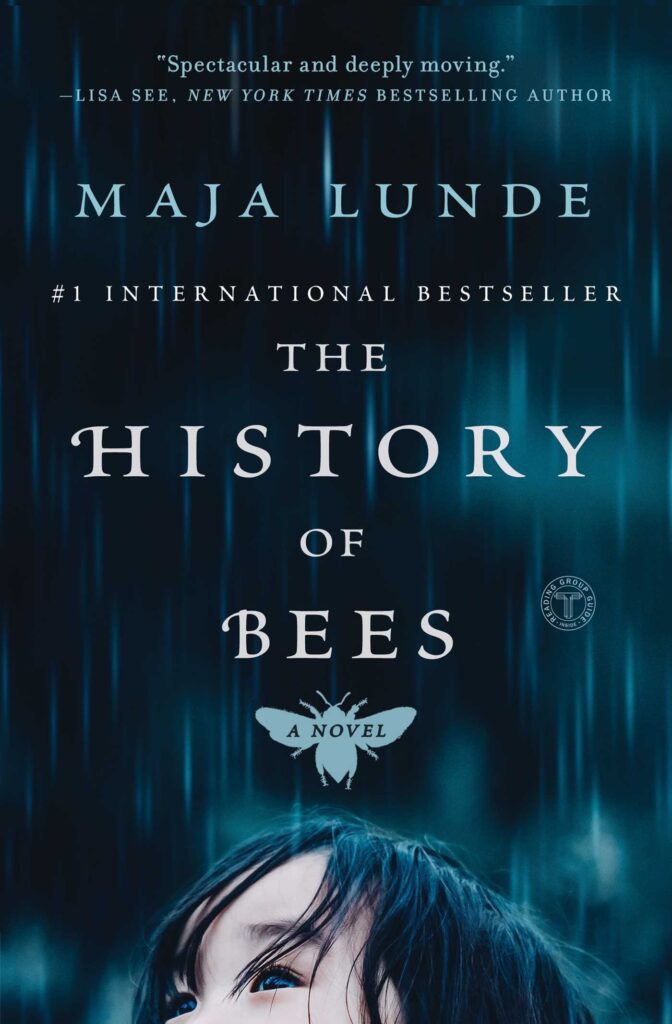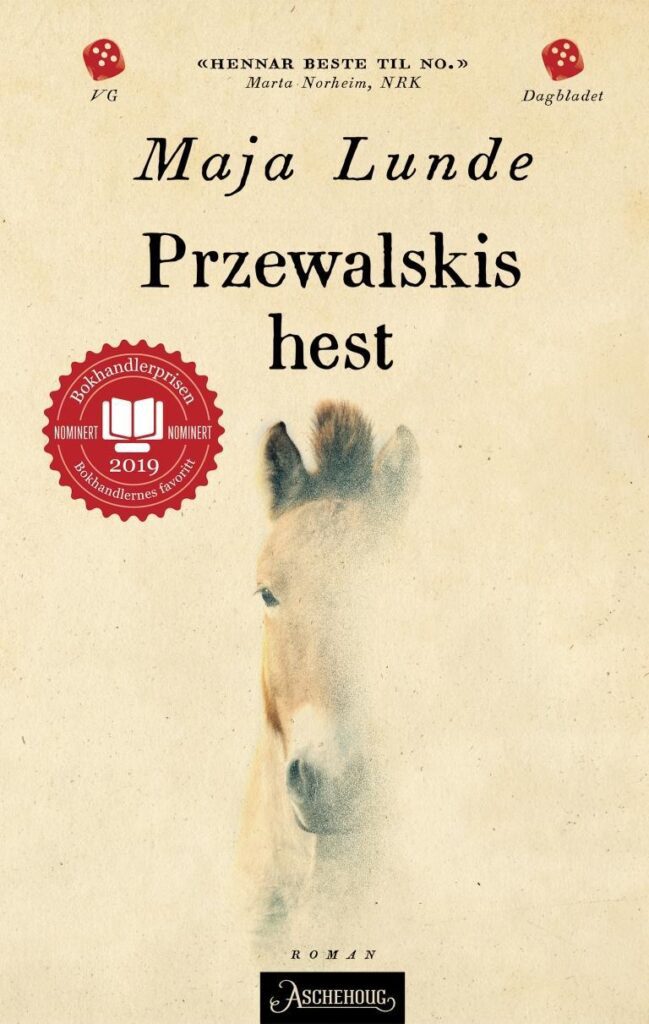"The Virus will be Televised." Climate change too!
This is a global portal for all novels and movies about climate change and "The Virus," with news links and opeds from blogs to videos to Wikipedia to Twitter to news links and Facebook Groups. See this portal, the only such cli-fi sci-fi portal on the internet. MEDIA inquiries are okay at this point in time, and personal comments may be sent to the editor at danbloom ATMARK gmail DOT com
Saturday, March 13, 2021
the man who coined 'cli-fi' has some reading suggestions for you / posted by Amy Brady on February 8, 2017
“Burning Worlds” is a new monthly column dedicated to examining important trends in climate change fiction, or “cli-fi.” FEBRUARY 8, 2017 column by editor Amy Brady in the Chicago Review of Books. In her original column, now missing from the internet for some odd reason, but which I saved in my files, she wrote:
It astonishes to think just how long humans have known that the Earth is getting warmer. The term “global warming” didn’t enter public consciousness until the 1970s, but scientists have studied our planet’s natural greenhouse effect since at least the 1820s. In 1896, a Swedish chemist named Svante Arrheniussome concluded that human activity (like coal burning) contributed to the effect, warming the planet further.
And yet, here we find ourselves in 2017, still wrestling with manmade climate change like it’s a new phenomenon. Why have we not acted sooner? The answer may lie in what Indian author Amitav Ghosh calls humanity’s “great derangement”: our inability to perceive the enormity of the catastrophe that awaits us.
That’s where fiction writers come in.*
For years, authors have been writing climate change fiction, or “cli-fi,” a genre of literature that imagines the past, present, and future effects of climate change. Their work crosses literary boundaries in terms of style and content, landing on shelves marked “sci-fi” and “literary fiction.” Perhaps you’ve read one of the classics: Margaret Atwood’s Oryx and Crake or Kim Stanley Robinson’s Forty Signs of Rain. Then there’s Ian McEwan’s Solar and J. G. Ballard’s 1965 novel The Burning World, from which this column derives its name. Each of these novels—like others in the genre—help us to “see” possible futures lived out on a burning, drowning, or dying planet.
Here at the Chicago Review of Books, we feel it’s time to give cli-fi more attention. To that end, we bring you “Burning Worlds,” a new monthly column dedicated to examining what’s hot (sorry) in cli-fi. It’ll feature interviews, reviews, and analyses of the genre with the hope of generating a larger conversation about climate change and why imagined depictions of the phenomenon are vital to the literary community—and beyond.
Kicking us off is an interview with journalist and former teacher Dan Bloom, the man who coined the term “cli-fi” (read more about Bloom in his interview with Literary Hub). Bloom founded and maintains The Cli-Fi Report, the web’s most comprehensive site dedicated to cli-fi. He is a tireless crusader for the genre, a self-proclaimed “cli-fi missionary.” In this interview, we discuss what inspired his passion for climate change fiction, why he thinks the term “cli-fi” caught on, and what he recommends we all read next.
Amy Brady: You’ve had impressive careers as a journalist and a teacher and have lived around the world. Tell us more about yourself and your love for literature.
Dan Bloom: I graduated from Tufts, class of 1971, as a literature major. I studied American poetry under Maxine Kumin, read a lot of French, Russian, and Spanish lit (studied in Paris my junior year), and really wanted to be a novelist. I even wrote one! Never published it. After college, I worked in Washington D.C. as a freelance cartoonist for The New Republic, The Washington Star, and The Washington Post. In 1983, I became the fulltime editor of the “Letters to the Editor” section at The Los Angeles Herald Examiner. In the late ’80s I founded a free weekly paper in Juneau, Alaska called The Capital City Weekly, where I served as editor, reporter, humor columnist, and book reviewer. I moved to Japan in the ‘90s and worked at a paper called the Yomiuri Shimbun—I wrote for their English section as a reporter and book reviewer. Then it was on to The Taipei Times—I still freelance there.
In the early 2000s, I taught part-time as an adjunct lecturer in the Taiwanese literature and computer science departments, teaching English composition to Master’s Degree students.
Literature has always been important to me. I’ve read the New York Times Sunday Book Review every Sunday since 1964, and in college was a fan of The New York Review of Books and The Paris Review, back when George Plimpton ran it. I still read Publisher’s Weekly every week—it’s my publishing Bible.
Amy Brady: What brought your attention to climate change fiction specifically?
Dan Bloom: The 2006 report released by The Intergovernmental Panel on Climate Change (IPCC), and the powerful James Lovelock interview in The Independent in the U.K. that same year. He spoke of there being only a few people left in the arctic after global warming decimates the human population. That bit sent shivers down my spine. It was a “eureka” moment, a wake-up call.
Amy Brady: You were the first person to coin the term “cli-fi.” What inspired you to use it, and why do you think it caught on?
Dan Bloom: “Cli-fi” came to me after I read the IPCC report and was thinking of ways to raise awareness of novels and movies about climate change issues. I toyed with using such terms as “climafic” or “climfic” or “clific”. But I wanted an even shorter term that could fit easily into newspaper and magazine headlines. So using the rhyming sounds of “sci-fi,” I decided to go with “cli-fi”.
The term started to catch on worldwide on April 20, 2013 when NPR did a five-minute radio segment about “cli-fi” with authors Nathaniel Rich (Odds Against Tomorrow) and Barbara Kingsolver (Flight Behavior). That segment reached academics, literary critics, journalists and headline writers. Why did it catch on? For one, I conducted a prolonged, daily, 24/7 P.R. campaign via Twitter and email to reach media people after the NPR story went viral to keep the momentum going. I contacted all kinds of people in the literary world. About 90 percent of them did not respond to my emails or my Tweets. But 10 percent did, including Margaret Atwood and Michiko Kakutani, and that has made all the difference.
I never give up. This is my life’s work now and has been since I first read that IPCC report. It’s all I do, and it’s all I think about. It’s my life now.
Amy Brady: Why is it important to read cli-fi?
Dan Bloom: Cli-fi serves as a wake-up call. To quote Sarah Stone, who I believe said it best in a review of Edan Lepucki’s novel California for SFGate: “If we survive—truly, and not in the unhappy ways depicted [in California]—it will be in part because of books like this one, which go beyond abstract predictions and statistics to show the moment-by-moment reality of a painful possible future, the price we may have to pay for our passionate devotion to all the wrong things.”
Amy Brady: What can cli-fi novels do that perhaps cli-fi movies can’t? Or do you think they provide a similar experience?
Dan Bloom: Both are important. Novels are often adapted into movie scripts as we see with David Mitchell’s Cloud Atlas and the forthcoming Annihilation, which is based on Jeff Vandermeer’s novel of the same name. So there is a nice relationship between novels and movies. Movies, of course, reach millions of people with powerful visual impact. But novels are also discussed widely and treat subjects with more depth.
Amy Brady: What do you make of Amitav Ghosh’s recent book-length examination of cli-fi, The Great Derangement?
Dan Bloom: I loved that book. It’s a collection of climate-themed essays from a University of Chicago lecture series, and I not only read them, I watched them on Youtube. It’s a very important book, but he got bogged down in the distinction between genre and literary fiction. Novelists today don’t care much about such intellectual distinctions. Using words to tell a good story is all that matters. Genre is only important for organizing library shelves. Truly. Story is everything.
Amy Brady: How do you envision your role in the world of cli-fi moving forward?
Dan Bloom: Me? I see myself as a cli-fi missionary, a cheerleader for novelists and screenwriters, a P.R. guy with media contacts, a literary theorist, and an advisor to novelists seeking publication advice and direction. I get personal emails from novelists wanting to know more about cli-fi and how to place their novels every week.
Amy Brady: What are some of your favorite cli-fi novels?
Dan Bloom: Polar City Red by Jim Laughter, Finitude by Hamish McDonald, Flight Behavior by Barbara Kingsolver, The Water Knife by Paolo Bacigalupi, and Jean-Marc Ligny’s Acqua TM, a novel in French that should be translated into English. From Germany, I love EisTau by Ilija Trojanow, which was recently translated into English as The Lamentations of Zero. That book is even better than Ian McEwan’s Solar. I’m all in favor of non-English language cli-fi novels. Cli-fi, after all, is a worldwide call to action.
*It’s worth noting that in The Great Derangement Ghosh writes that he feels there’s a lack of literary response to climate change. While many people, this writer included, feel somewhat differently on this point, Ghosh’s arguments are well worth exploring further.
Dan Bloom is a 1971 graduate of Tufts University in Boston. He received his MA in Speech and Communications from Oregon State University. Bloom worked as a journalist in Alaska for 12 years and, later, as a newspaper editor and reporter at English-language newspapers in Japan and Taiwan.
Monday, October 26, 2020
Japanese jazz pianist Tadataka Unno, 40, was assaulted by 8 Black teens in NYC but New York Times refuses to reveal race of the attackers. Why the silence?
Japanese jazz pianist Tadataka Unno, 40, was assaulted by 8 Black teens in NYC
While no major newspapers in either the USA or Japan printed the information that Mr Unno was assaulted by a gang of Black teens in Manhattan at a subway station, the truth is that his 8 assailants were Black teenagers, most male, a few female. The New York Times was afraid to print the truth, even though its editors knew the truth. What's wrong with newspapers today?
According to Anna Mutoh, a student at the Columbia University Graduate School of Journalism who found out the truth by speaking with Unno herself in a telephone interview she conducted, Unno was about to take a subway train home to his wife and infant son in Harlem after a long day in a recording studio. But as he walked through the gate, a group of 8 Black teenagers blocked his exit. As this blog post goes to print, nobody has been arrested so far, even though police TV cameras in the subway station captured the teens' actions and faces. Unno grew up in Japan with an intererst in jazz, and came to the United States in 2008 with his Japanese wife to pursue his dream as a jazz pianist. Unno and his wife now have to decide if they if they want to stay in New York and raise their four-month-old infant son there. Unno told Mutoh in the phone interview that his attackers were Black, a key piece of information the New York Times withheld from the public. Why would New York Times editors do such a thing? This is the truth that America does not want to hear. Go figure.
Thursday, September 10, 2020
Where our climate fiction aka ''cli-fi'' is marked by melancholy, the African texts have an angry and tenacious energy
Der vår klimafiksjon bærer preg av melankoli, har de afrikanske tekstene en sint og seig energi
===============
Is it written cli-fi on the African continent?
The relationship between man and nature can be said to be a fixture in all of African speculative literature, especially magical realism.
Robson's text is exciting because it looks both forward and backward. It is reminiscent of geographical segregation under apartheid, under The Natives Act in the countryside and certain areas such as Soweto in Johannesburg or District 6 in Capetown, where people were crammed into barren land or far too little space. At the same time, she looks ahead; a warning about what the climate crisis can do to democracy, that it can create an endless state of emergency that gives those with power permission to tighten. The text says: "remember what happened the last time the few had power in South Africa and acted" for the common good "". This also seems relevant now, during the Covid 19 crisis. In Nariobi, it is reported that so far more people have died from police violence for breaking the quarantine than from the actual disease.
Traditionally, African sci-fi has also been concerned with colonization and power imbalance, perhaps not surprisingly (read, for example, "Why Sci-Fi Keeps Imagining the Subjugation of White People", The Atlantic 2014). Even in cli-fi, climate change is quickly linked to power imbalances, inequalities and injustice. The more general ideas of 'climate justice' may also have found their way into the literature.
Okorafors Who fears death (2010) is set in a post-apocalyptic Africa where magic and high technology mix seamlessly. The title character Onyesonwu, whose name means "Who Fears Death", grows into her own magical powers in a wiped out world, as she tries to figure out the forces that are trying to destroy her. It's dark, but it's also about toughness and resilience.
Where our climate fiction can be said to be marked by melancholy, the African texts more often carry a different energy. They are indignant about injustice, and are at the same time a celebration of "African toughness". In these, it is impossible to separate the climate crisis from abuse of power, capitalist greed and (technological) inequality, the source of most of Africa's problems in the first place.
Locally produced cli-fi has an extra important role for the African continent. Novels and films about climate can inspire Africans to envision the future with renewed vigor, and perhaps alleviate some of the feeling of powerlessness.
But the genre deserves more attention in the rest of the world as well. Not as a poor cousin of Anglo-American climate fiction, but in its own right, and as a new angle to look at the climate crisis from. Since those with the least should suffer the most, it is perhaps this angle we should be most aware of.
Maybe there's something in it. The award-winning Sundance film Pumzi, takes place in the Maitu community in the East African territory thirty-five years after World War III - the Water War. Director Wanuri Kahiu has commented that the film was partly inspired by her irritation over the price of bottled water in Kenya. Water shortages are already a major problem in Kenya, where only 58 percent have access to clean drinking water.
When Maja Lunde or Kingsolver write about bees or butterflies, I read to a greater extent the sub-text as a melancholy warning, that we must be careful. The African cli-fi is more about a scary reality that is already here (put at the forefront), and inspiration for what is required to deal with it.
Water shortages are already a major problem in Kenya, where only 58 percent have access to clean drinking water.
Something exciting about South African climate fiction is that several authors draw a line between climate change and life during apartheid. Jenny Robson from South Africa has written a world where "Homosaps" live in reserves so that the continent's fauna and flora can recover from the anthropogenic eco-disaster. The main character, the teenager Savannah, has a gene boyfriend - people who are genetically engineered so that their organs, when they turn 18, can be harvested for endangered animal species.
To say something about African climate fiction, one must first say something about the rich tradition of which it is a part - African speculative fiction. In the pre-war period, the English texts that I have managed to find were written by white South Africans. They are mostly about what in the world was going to happen if apartheid were ever to end. After independence, from 1960 onwards, there are plenty of what can be called postcolonial sci-fi, such as Buchi Emecheta's The Rape of Shavi (1983) or Kojo Laing's Woman of the Airplanes (1988, Ghana). In recent times, it is mostly produced in Nigeria and South Africa, and the flows between African America and Africa are so dense and flowing so fast that it is difficult to get an overview of where something originated or who influenced what.
Afro-futurism has undoubtedly influenced science fiction on the African continent and vice versa, also through the diaspora and multicultural writers. This current connects tradition and spirituality that has emerged on the continent with modern and futuristic technologies and lifestyles, and must be said to be political.
It elevates a vision of the upright, independent black man, rooted in a rebuilt past (a past that for many African Americans disappeared in the waves across the Atlantic) that confidently enters a golden future.
More famous voices such as Doris Lessing, Ngũgĩ wa Thiong'o and Ben Okri have also visited the sci-fi genre. Kenyan Thiong'o released Wizard of the Crows in 2006, which deals with corruption in the fantasy land of Abruria
Where our climate fiction ''cli-fi'' is marked by melancholy, the African texts have an angry and tenacious energy.=================
Climate anxiety creates a need. A need to process what is happening now, and what we fear will happen in the future. Science fiction is therefore an exciting genre, because it allows us to explore spooky and possible futures in safe laboratory-like surroundings. Therefore, it is not surprising that a new sub-genre in science fiction has emerged. We're talking about "cli-fi" - climate fiction.
Texts that can be called cli-fi have been written since the 19th century at least, but their popularity has increased sharply in our time. An important reason may be that climate fiction can analyze technical concepts through accessible language and captivating stories, which makes it easier for the public to participate in contemporary "technical" climate discourse. Today, the genre has been made mainstream by big international names such as Margaret Atwood, Ian McEwan and Barbara Kingsolver.
In Norway, there are also several who have been to the sub-genre. For example, Maja Lunde writes about China in the year 2098 (The history of bees), a world where bees have disappeared and one of the main characters, Tao, works to pollinate plants by hand.
It is no secret that those who will suffer the most from climate change are those who already have the least, both now and in the future. Is it written cli-fi on the African continent? If so, does the imagined future look different to these creators than to European and American ones?
==================
krives det cli-fi på det afrikanske kontinentet?
Der vår klimafiksjon bærer preg av melankoli, har de afrikanske tekstene en sint og seig energi
S
===============
Where our climate fiction ''cli-fi'' is marked by melancholy, the African texts have an angry and tenacious energy.=================
Climate anxiety creates a need. A need to process what is happening now, and what we fear will happen in the future. Science fiction is therefore an exciting genre, because it allows us to explore spooky and possible futures in safe laboratory-like surroundings. Therefore, it is not surprising that a new sub-genre in science fiction has emerged. We're talking about "cli-fi" - climate fiction.
Texts that can be called cli-fi have been written since the 19th century at least, but their popularity has increased sharply in our time. An important reason may be that climate fiction can analyze technical concepts through accessible language and captivating stories, which makes it easier for the public to participate in contemporary "technical" climate discourse. Today, the genre has been made mainstream by big international names such as Margaret Atwood, Ian McEwan and Barbara Kingsolver.
In Norway, there are also several who have been to the sub-genre. For example, Maja Lunde writes about China in the year 2098 (The history of bees), a world where bees have disappeared and one of the main characters, Tao, works to pollinate plants by hand.
It is no secret that those who will suffer the most from climate change are those who already have the least, both now and in the future. Is it written cli-fi on the African continent? If so, does the imagined future look different to these creators than to European and American ones?
==================
Skrives det cli-fi på det afrikanske kontinentet?
For å si noe om afrikansk klimafiksjon må man først si noe om den rike tradisjonen den er en del av - afrikansk spekulativ skjønnlitteratur. I førkrigstiden var de engelske tekstene som jeg har klart å oppdrive skrevet av hvite sør-afrikanere. De handler for det meste om hva i all verden som kom til å skje om apartheid noensinne skulle ta slutt. Etter uavhengigheten, fra 1960 av, kommer det masse av det som kan kalles postkolonial sci-fi, som Buchi Emecheta’s The rape of Shavi (1983) eller Kojo Laing sin Woman of the aeroplanes (1988, Ghana). I nyere tid produseres det mest i Nigeria og Sør Afrika, og strømningene mellom afro-amerika og Afrika er så tette og flyter så fort at det er vanskelig å få oversikt over hvor noe oppsto eller hvem som påvirket hva.
Afrofuturisme har uten tvil påvirket science fiction på det afrikanske kontinentet og omvendt, også gjennom diasporaen og flerkulturelle forfattere. Denne strømningen kobler tradisjon og spiritualitet som har oppstått på kontinentet med moderne og futuristiske teknologier og livsstiler, og må sies å være politisk.
Den løfter frem en visjon om det oppreiste, selvstendige svarte mennesket, rotfestet i en gjenoppbygd fortid (en fortid som for mange afro-amerikanere forsvant i bølgene over Atlanteren) som med selvsikkerhet går inn i en gyllen framtid.
Mer kjente stemmer som Doris Lessing, Ngũgĩ wa Thiong'o og Ben Okri har også vært innom sci-fi sjangeren. Kenyanske Thiong'o slapp Wizard of the Crows i 2006, som tar for seg korrupsjon i fantasilandet Abruria.
I en del av boka følger vi en minister som i et politisk spill setter i gang å bygge verdens høyeste bygning. Så høy faktisk, at Abruria må utvikle et romprogram for å få presidenten, i rakett, opp til hans penthouse-leilighet.
De fleste av tekstene jeg har lest om ser ut til å ha en ting til felles, og her er kanskje en forskjell mellom den afrikanske og anglo-amerikanske tradisjonen: Der europeisk sci-fi ofte har et fabel-aktig budskap er de afrikanske tekstene mer opptatt av å bruke genren som et verktøy for å få ny innsikt i noe konkret som allerede foregår (korrupsjon, arbeidsløshet, kolonitidens etterlatenskaper, den arabiske våren). Dette gjelder også for klimafiksjon.
Forholdet mellom menneske og natur kan nesten sies å være fast inventar i alt av afrikansk spekulativ litteratur, spesielt magisk realisme. De tekstene som går mer konkret på klimaendringene behandler dem, mener jeg, som «enda en utfordring» mer enn «den Store Fare» som er tendensen i Europa. Det er ikke så rart egentlig. I et intervju hevder den nigeriansk-amerikanske sci-fi forfatteren Tochi Onyebuchi at konseptet dystopi vanligvis rammes rundt hvite erfaringer, nettopp fordi «dystopia allerede er virkeligheten til svarte».
For å si noe om afrikansk klimafiksjon må man først si noe om den rike tradisjonen den er en del av - afrikansk spekulativ skjønnlitteratur. I førkrigstiden var de engelske tekstene som jeg har klart å oppdrive skrevet av hvite sør-afrikanere. De handler for det meste om hva i all verden som kom til å skje om apartheid noensinne skulle ta slutt. Etter uavhengigheten, fra 1960 av, kommer det masse av det som kan kalles postkolonial sci-fi, som Buchi Emecheta’s The rape of Shavi (1983) eller Kojo Laing sin Woman of the aeroplanes (1988, Ghana). I nyere tid produseres det mest i Nigeria og Sør Afrika, og strømningene mellom afro-amerika og Afrika er så tette og flyter så fort at det er vanskelig å få oversikt over hvor noe oppsto eller hvem som påvirket hva.
Afrofuturisme har uten tvil påvirket science fiction på det afrikanske kontinentet og omvendt, også gjennom diasporaen og flerkulturelle forfattere. Denne strømningen kobler tradisjon og spiritualitet som har oppstått på kontinentet med moderne og futuristiske teknologier og livsstiler, og må sies å være politisk.
Den løfter frem en visjon om det oppreiste, selvstendige svarte mennesket, rotfestet i en gjenoppbygd fortid (en fortid som for mange afro-amerikanere forsvant i bølgene over Atlanteren) som med selvsikkerhet går inn i en gyllen framtid.
Mer kjente stemmer som Doris Lessing, Ngũgĩ wa Thiong'o og Ben Okri har også vært innom sci-fi sjangeren. Kenyanske Thiong'o slapp Wizard of the Crows i 2006, som tar for seg korrupsjon i fantasilandet Abruria.
I en del av boka følger vi en minister som i et politisk spill setter i gang å bygge verdens høyeste bygning. Så høy faktisk, at Abruria må utvikle et romprogram for å få presidenten, i rakett, opp til hans penthouse-leilighet.
De fleste av tekstene jeg har lest om ser ut til å ha en ting til felles, og her er kanskje en forskjell mellom den afrikanske og anglo-amerikanske tradisjonen: Der europeisk sci-fi ofte har et fabel-aktig budskap er de afrikanske tekstene mer opptatt av å bruke genren som et verktøy for å få ny innsikt i noe konkret som allerede foregår (korrupsjon, arbeidsløshet, kolonitidens etterlatenskaper, den arabiske våren). Dette gjelder også for klimafiksjon.
Forholdet mellom menneske og natur kan nesten sies å være fast inventar i alt av afrikansk spekulativ litteratur, spesielt magisk realisme. De tekstene som går mer konkret på klimaendringene behandler dem, mener jeg, som «enda en utfordring» mer enn «den Store Fare» som er tendensen i Europa. Det er ikke så rart egentlig. I et intervju hevder den nigeriansk-amerikanske sci-fi forfatteren Tochi Onyebuchi at konseptet dystopi vanligvis rammes rundt hvite erfaringer, nettopp fordi «dystopia allerede er virkeligheten til svarte».
Forholdet mellom menneske og natur kan sies å være fast inventar i alt av afrikansk spekulativ litteratur, spesielt magisk realisme.
Det er kanskje noe i det. Den prisvinnende Sundance-filmen Pumzi, finner sted i Maitu-samfunnet i det østafrikanske territoriet tretti-fem år etter tredje verdenskrig — Vannkrigen. Regissøren Wanuri Kahiu har kommentert at filmen delvis var inspirert av hennes irritasjon over prisen på flaskevann i Kenya. Vann-mangel er allerede et stort problem i Kenya, hvor kun 58 prosent har tilgang til rent drikkevann.
Når Maja Lunde eller Kingsolver skriver om bier eller sommerfugler så leser jeg i større grad sub-teksten som en melankolsk advarsel, at vi må passe oss. I den afrikanske cli-fien handler det mer om en skummel virkelighet som allerede er her (satt på spissen), og inspirasjon til det som kreves for å håndtere den.
Vann-mangel er allerede et stort problem i Kenya, hvor kun 58 prosent har tilgang til rent drikkevann.
2- California author tackles climate change in new multimedia serial novel
California author tackles climate change in new multimedia serial novel
https://cli-fi-books.blogspot.com/2020/09/california-author-tackles-climate.html
by staff writer
When the Larsen B Ice Shelf broke up in 2002, NASA’s satellite imagery showing the 35-day
disintegration of 1,255 square miles of ice did more than just knock the wind out of Dan
Linehan, the author of the new multimedia serial novel ''The Princess of the Bottom of the World.''
(https://youtu.be/w3TYh6IG5dY) and its integrated Multimedia Traveling Companion
(https://www.dslinehan.com/princess).
This catastrophic gut punch made the severity of climate change crystal clear to Linehan,
leading him on a path to Antarctica and to other unbelievable adventures.
In 2006, he scheduled an expedition to Antarctica and the surrounding regions set to last
for 37 days so that he could study and write nonfiction about climate change and other severe
environmental issues. Instead, his journey lasted 63 days.
He hiked a glacier-covered mountain in Antarctica behind his shirtless expedition leader,
watched penguin chicks pant from the excessive heat, encountered seals being strangled by
plastic pollution, investigated a cruise ship accident in Antarctica’s Deception Island where the
oil spill was covered up, weathered a deadly and devastating storm in Argentina (one of those
100-year or 500-year severe weather storms that now seem to happen multiple times every year),
and more.
His experiences got him recognized by Participant Media, the filmmakers of the documentary ''An
Inconvenient Truth''. He credits the documentary’s use of personal stories and multimedia in his
approach to addressing climate change. He’d even rewatched it en route to Antarctica. As part of
the 10-year celebration of the film, Participant made a short video of his work
(https://youtu.be/AAcjj06n_74).
“Ever since becoming a professional writer, writing about social justice issues [has been]
extremely important to me, and it also defined my long-term goals,” he stated in a recent video
of a presentation he gave to the California Writers Club about using fiction and multimedia to
tell unconventional stories (https://youtu.be/V7f90evGMAA?t=93).
Curiously, Linehan, who is known for covering science, nature, and the environment in
writings such as ''SpaceShipOne: An Illustrated History,'' which has a foreword by Sir Arthur C.
Clarke and a cover blurb by Cosmos host Dr. Neil deGrasse Tyson, has written his new book as a
work of fiction instead of nonfiction.
Over the years, he has specialized in using multimedia to
communicate complex and challenging science to wide and diverse audiences. Why the change?
After beginning his career as a superconductor researcher and then as a microchip
engineer—specializing in contamination control and chemical processes—he switched in 2000 to
become a writer and quickly found his background gave him unique insight into critical issues
negatively impacting society at an environmental level.
Linehan believes that there is more than enough scientific evidence about climate change
to make the right choices for humanity and the planet. He became increasingly frustrated by how
so many people embraced the products of science and technology, but turned their backs on the
scientific and technological when it came to repercussions that were unfortunate for them to
hear, as if the laws of physics no longer applied to the problematic.
The Monterey, California, resident decided his unimaginable experiences were best told
using fiction, as had been done by local writer John Steinbeck in ''The Grapes of Wrath'' and
''Cannery Row.''
“I found that to tackle such a critical issue as climate change, it was important to spread
the message using multiple mediums. In addition to documentaries and presentations, things like
music, art, film, and literature can make strong connections with people,” he writes on his
website (https://www.dslinehan.com/story-behind-story.html). “Some approaches can better
reach people who would ordinarily tune out something about climate change. This is when my
writing about what I faced in and around Antarctica transitioned from nonfiction into fiction.”
So, he approached his series by giving ample sugar (laughs and romance) while not
making the medicine too unpalatable.
He writes in ''The Princess of the Bottom of the World''
(https://www.smashwords.com/books/view/988659?ref=DSLinehan), “This was exactly the type
of severe weather event that scientists predicted from climate change caused by global warming.
Climate was like a yo-yo on a string. Sometimes up and sometimes down and sometimes in the
middle. The yo-yo changed all the time but only worked along the length of string. Even yo-yo
tricks fell within a predictable range. Global warming was like cutting the string. Now, once you
flicked the yo-yo out of your hand, you didn’t know what it would hit or where it would land.
Because Earth’s climate was such a big yo-yo, it only took very small changes in the average
global temperature — just fractions of a degree — to make dramatic changes.”
Though the impact from burning fossil fuel began as the industrial revolution shifted into
high gear, it wasn’t until the digital age that scientists discovered its scope of effects on the
climate. Linehan’s multimedia ''The Princess of the Bottom of the World'' is undoubtedly his
ambitious digital attempt to raise awareness and inspire positive action.
California author tackles climate change in new multimedia serial novel
California author tackles climate change in new multimedia serial novel
by staff writer
When the Larsen B Ice Shelf broke up in 2002, NASA’s satellite imagery showing the 35-day
disintegration of 1,255 square miles of ice did more than just knock the wind out of Dan
Linehan, the author of the new multimedia serial novel ''The Princess of the Bottom of the World.''
(https://youtu.be/w3TYh6IG5dY) and its integrated Multimedia Traveling Companion
(https://www.dslinehan.com/princess).
This catastrophic gut punch made the severity of climate change crystal clear to Linehan,
leading him on a path to Antarctica and to other unbelievable adventures.
In 2006, he scheduled an expedition to Antarctica and the surrounding regions set to last
for 37 days so that he could study and write nonfiction about climate change and other severe
environmental issues. Instead, his journey lasted 63 days.
He hiked a glacier-covered mountain in Antarctica behind his shirtless expedition leader,
watched penguin chicks pant from the excessive heat, encountered seals being strangled by
plastic pollution, investigated a cruise ship accident in Antarctica’s Deception Island where the
oil spill was covered up, weathered a deadly and devastating storm in Argentina (one of those
100-year or 500-year severe weather storms that now seem to happen multiple times every year),
and more.
His experiences got him recognized by Participant Media, the filmmakers of the documentary ''An
Inconvenient Truth''. He credits the documentary’s use of personal stories and multimedia in his
approach to addressing climate change. He’d even rewatched it en route to Antarctica. As part of
the 10-year celebration of the film, Participant made a short video of his work
(https://youtu.be/AAcjj06n_74).
“Ever since becoming a professional writer, writing about social justice issues [has been]
extremely important to me, and it also defined my long-term goals,” he stated in a recent video
of a presentation he gave to the California Writers Club about using fiction and multimedia to
tell unconventional stories (https://youtu.be/V7f90evGMAA?t=93).
Curiously, Linehan, who is known for covering science, nature, and the environment in
writings such as ''SpaceShipOne: An Illustrated History,'' which has a foreword by Sir Arthur C.
Clarke and a cover blurb by Cosmos host Dr. Neil deGrasse Tyson, has written his new book as a
work of fiction instead of nonfiction.
Over the years, he has specialized in using multimedia to
communicate complex and challenging science to wide and diverse audiences. Why the change?
After beginning his career as a superconductor researcher and then as a microchip
engineer—specializing in contamination control and chemical processes—he switched in 2000 to
become a writer and quickly found his background gave him unique insight into critical issues
negatively impacting society at an environmental level.
Linehan believes that there is more than enough scientific evidence about climate change
to make the right choices for humanity and the planet. He became increasingly frustrated by how
so many people embraced the products of science and technology, but turned their backs on the
scientific and technological when it came to repercussions that were unfortunate for them to
hear, as if the laws of physics no longer applied to the problematic.
The Monterey, California, resident decided his unimaginable experiences were best told
using fiction, as had been done by local writer John Steinbeck in ''The Grapes of Wrath'' and
''Cannery Row.''
“I found that to tackle such a critical issue as climate change, it was important to spread
the message using multiple mediums. In addition to documentaries and presentations, things like
music, art, film, and literature can make strong connections with people,” he writes on his
website (https://www.dslinehan.com/story-behind-story.html). “Some approaches can better
reach people who would ordinarily tune out something about climate change. This is when my
writing about what I faced in and around Antarctica transitioned from nonfiction into fiction.”
So, he approached his series by giving ample sugar (laughs and romance) while not
making the medicine too unpalatable.
He writes in ''The Princess of the Bottom of the World''
(https://www.smashwords.com/books/view/988659?ref=DSLinehan), “This was exactly the type
of severe weather event that scientists predicted from climate change caused by global warming.
Climate was like a yo-yo on a string. Sometimes up and sometimes down and sometimes in the
middle. The yo-yo changed all the time but only worked along the length of string. Even yo-yo
tricks fell within a predictable range. Global warming was like cutting the string. Now, once you
flicked the yo-yo out of your hand, you didn’t know what it would hit or where it would land.
Because Earth’s climate was such a big yo-yo, it only took very small changes in the average
global temperature — just fractions of a degree — to make dramatic changes.”
Though the impact from burning fossil fuel began as the industrial revolution shifted into
high gear, it wasn’t until the digital age that scientists discovered its scope of effects on the
climate. Linehan’s multimedia ''The Princess of the Bottom of the World'' is undoubtedly his
ambitious digital attempt to raise awareness and inspire positive action.
Tuesday, September 1, 2020
The spoken sound of the ‘cli-fi’ term releases an echo heard ’round the world
Although the literary genre term of cli-fi has been around in print publications and newspapers for a good 10 years now, the term really resonates best when it is spoken out loud on radio shows, TV programs, podcasts and YouTube videos. In fact, the term is still so new that many people are not quite sure yet how to sound it out when they see it in print.
I like the way rhe term appears in print, but even more I love the way it sounds when spoken on TV, radio or podcasts. Or at taped academic forums available now on YouTube. It sounds like this: "klai-fai" or "klye-fye"
What makes the sound so strong is the first syllable of "klai" since the hard "K" gives a special punch to the term when said out loud. Unlike the sci-fi term which has a soft sound with both syllables, with the "sci" sound sounding like "sigh," cli-fi resonates in a strong, assertive way when spoken out loud as "klai-fai."
That's why I like the cli-fi term when I hear it spoken out loud, in addition to seeing it so often now in print publications online and in newspapers and magazines. Try saying the term out loud right now and see if you can understand what I mean about how strong the term sounds with spoken. It is asking us to pay attention to climate change, and to runaway climate change in particular.
It's 2020 now and cli-fi is set to remain in play as a literary term for the next 80 years at least, all the way up to the year 2100 and maybe beyond. It's part of the 21st century now and it will be part of the 22nd century in 100 more years. It's playing an important role in our culture and our novels and movies. Sound it out! Say it loud and clear! Cli-fi!
The Buzz about Maja Lunde and Norwegian ‘Cli-Fi’ an essay by Boyd Tonkin
The Buzz about Maja Lunde and Norwegian ‘Cli-Fi’
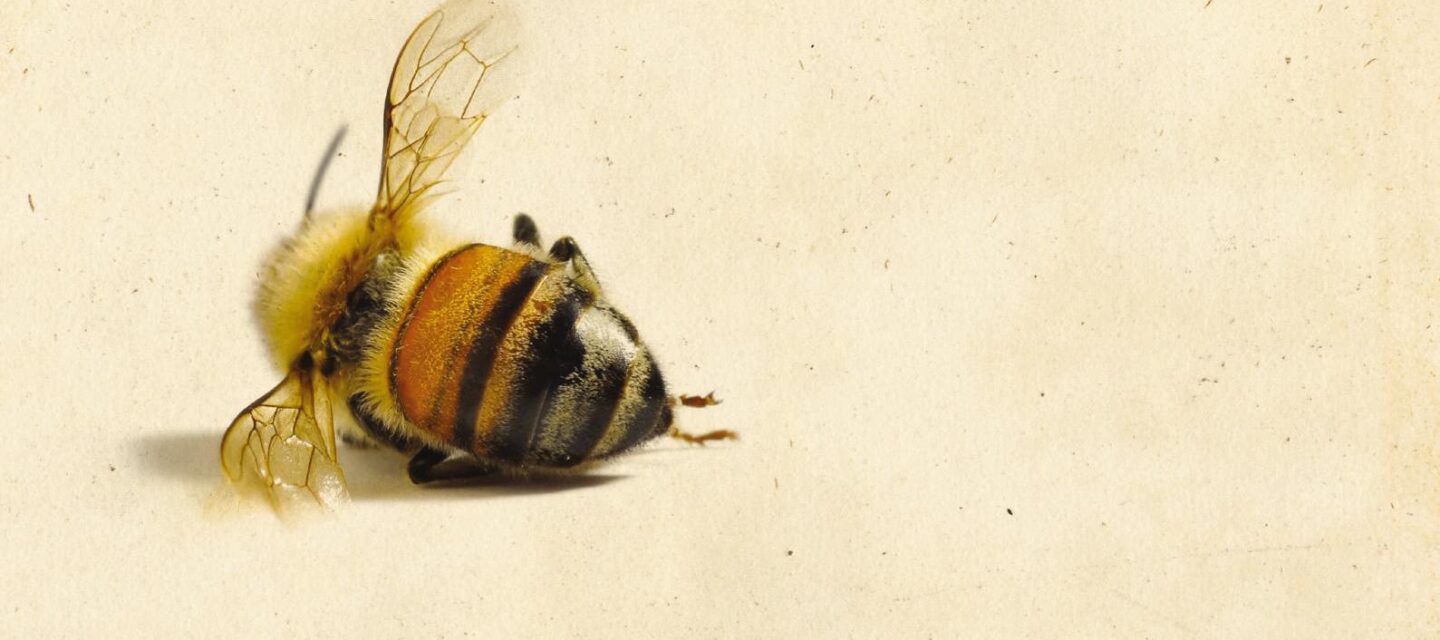
Recent years have seen novelists everywhere tackle the burning issue of climate change but in Norway environmental concerns have long been the focus of literary invention. Here British literary critic Boyd Tonkin explores how Norwegian authors have tried to save the world ....one story at a time.
A few years ago, I sat outside on a golden summer afternoon and watched the warm sun dance over waters of a brilliant blue. The Mediterranean? Far from it. I was in Tromsø, 350 km north of the Arctic Circle, and the improbably mild home of the world’s most northerly botanic garden. Crucially, that balmy (and, of course, endless) summer day was not in itself some alarming freak event. True, warmer temperatures have made recent winters shorter and wetter. But the blessings of the Gulf Stream have always given Tromsø, with its ice-free port, a climate that defies expectations for a city perched near our planet’s roof, at almost 70 degrees north. In fact, much of Norway – for all its winter storms and snows – enjoys weather that, in the gentler seasons anyway, mocks its high latitudes to welcome and nurture human settlement.
It’s no surprise that this delicate balance between harshness and mildness, ice and sun, white and green, should leave deep traces on the nation’s art and literature. Or that the pursuit of inspiration from the natural world should underpin the quintessentially Norwegian ideal of friluftsliv, the outdoors life. Or, indeed, that the mortal threat to this hard-won equilibrium posed by accelerating climate change should now preoccupy many of the nation’s authors. In Norway, as elsewhere, speculative fiction about climate change and its consequences (“cli-fi”, as critics have dubbed it) has ceased to be a marginal genre of interest to activists alone.
The international success of Maja Lunde, the Norwegian writer whose eco-themed novels have sold in millions and found translations all around the world, has made her work a flagship for the anxieties and dilemmas that haunt writers and readers today. An overheating planet, rising seas, melting ice-caps, mass extinctions, the failure of waters and crops, refugees in flight from shortages and conflicts: the crises of climatic change feel so profound that they may both ignite and overwhelm the imagination. How to create plausible stories that measure up to these epic, and tragic, upheavals without falling into the reader-repelling traps of the tract, the sermon, the finger-wagging prophecy of doom? For Lunde herself (as she told Amy Brady of the Yale Climate Connections site this year), the secret is to keep things human, dramatic and particular: “My writing starts with feelings. Never with a message. I think about the story and the characters; I want to be true to them, to feel that they are alive.”
Extreme climatic events have helped shape literary art since ancient times. Historians surmise, for instance, that the freak seasons of the mid-17th century fed the freezing, and burning, horrors that fill John Milton’s Paradise Lost. Mary Shelley wrote Frankenstein in 1816, the “year without a summer” after volcanic ash from Mount Tambora in Indonesia had darkened the world’s skies. Science fiction and fantastic literature of the mid-20th century – in works such as JG Ballard’s The Drowned World and The Burning World – vividly imagined an increasingly uninhabitable Earth, decades before the science of greenhouse emissions had become common knowledge. Then, as the millennium turned, fresh understanding gave an urgent edge to dystopian speculation in novels such as Margaret Atwood’s MaddAddam trilogy.
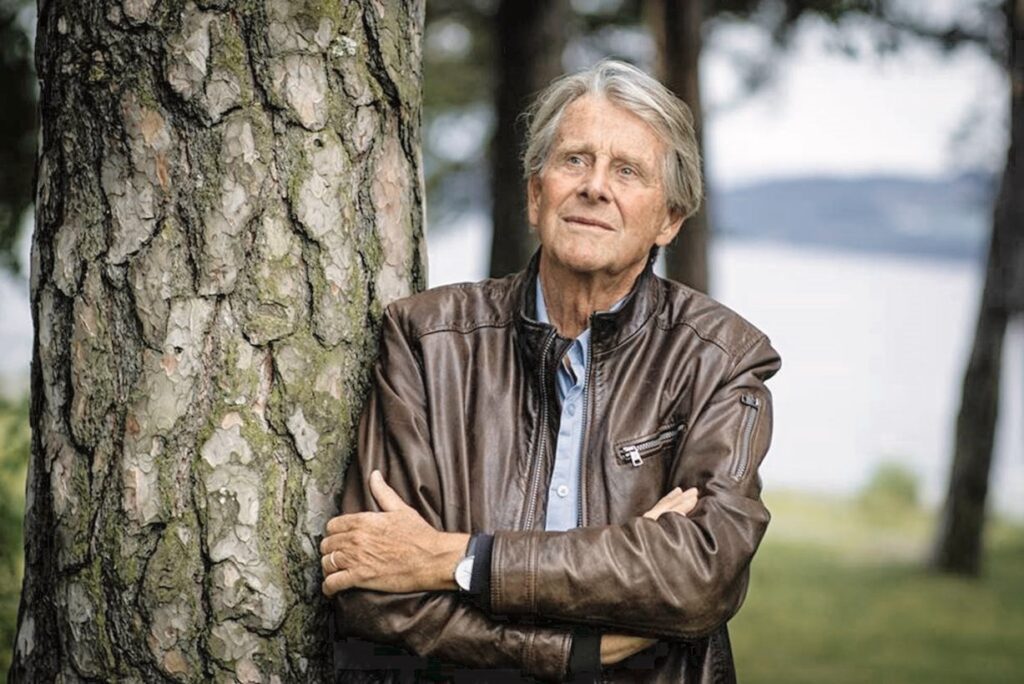
Knut Faldbakken, the Norwegian author of several early climate change novels published in the 1970s (Photo: Gyldendal Norsk Forlag)
Later fictional responses to environmental menace span genres as diverse as the sensational airport thriller (Gerd Nygårdshaug’s Chimera, 2011), the mystical quest for redemption in the wake of disaster (Berit Ellingsen’s Not Dark Yet, 2015), and the futuristic fable aimed at young readers (Jostein Gaarder’s The World According to Anna, 2015). Gaarder’s teenage heroine, Anna foresees the calamities in store for a scorched, parched Earth. Her messenger from the wasteland of 2082, Nora angrily demands – in the wake-up-call tones that often sound through these books – “I want the world that you had at my age”. Norway has also drawn writers from outside (notably Ian McEwan’s Solar, 2010, which is partly set in Svalbard).
Of course, much of Norwegian “cli-fi” shares the methods and ideas of eco-aware authors from other lands. However, aspects of the national culture colour these books with local shades of green. Knowledge of global warming has, in some sense, enhanced the collective self-image of a “lucky country”– one whose position and prospects might make it a magnet for refugees from hotter, drier places as its fresh waters, forestry and agriculture survive warming better than in lower latitudes. (There’s no lack of dystopian warnings either: of flooded shorelines, melting glaciers, even the demise of skiing as the snows retreat.)
Meanwhile, Norway’s ascent to the rank of global oil-and-gas power – while cleaner hydroelectric plants supply its own domestic needs – has prompted soul-searching in literature, as in politics. Can a nation grow rich by exporting fossil fuels while lamenting their local and global impacts? In The End of the Ocean, the second of Maja Lunde’s climate novels, her eco-warrior Signe casts a withering eye over “all those who are constructing Norway… while simultaneously they are destroying the world”.
All these currents merge in Lunde’s fiction. The Oslo-based writer was known for children’s fiction before The History of Bees, the first part of a planned “Climate Quartet”, became a bestseller at home and abroad. Three of these four novels have so far appeared: The History of Bees (2015), The End of the Ocean (2017), both translated by Diane Oatley and published by Scribner, and, in 2019, Przewalski’s Horse. The History of Bees skilfully guides the reader through the insects’ critical place in the natural cycles that support human life, as it switches between stories set in mid-19th century England, the 2000s in the American Mid-West, and a wrecked, near-starving future China in 2098. Attitudes to nature, past and present, are shown to have paved the path towards environmental hell.
In Lunde’s fiction, the healthy balance represented by bees – and their traditional keepers – gives way to catastrophic disruptions, hastened by toxic agribusiness and an altered climate. We see how the bees’ “meticulous and peaceful work, systematic, instinctive, hereditary” keeps us all alive and fed. In this dystopian scenario, “colony collapse” leads by 2045 to the bees’ extinction. However, she also sounds a modest note of hope – a key seasoning for “cli-fi” if authors want to steer their readers out of paralysing despair.

Sogn og Fjordane in Vestland, the spectacular setting for Maja Lunde’s The End of the Ocean (Photo: Coastal Museum, Sogne og Fjordane)
Again, Lunde leaves some wriggle-room for hope, not just in her plot-twists but through the resilience and idealism of her characters – above all the indomitable Signe.
The younger Signe fumes that “the pragmatic human being doesn’t understand passion” as her idealism collides with vested interests and the simple yearning for an easy life. Lunde’s novels show that passion has its part to play in denouncing, and averting, catastrophe. But so too, she hints, does scientific reason. The intellectual armoury that pushed humanity towards climate-change disaster may help it to find an exit as well.
Lunde’s latest book, Przewalski’s Horse, turns its gaze towards humanity’s relationship with animals. Via another triple time-frame, it interrogates the roles of science, activism and – vitally – compassion in healing our broken connections with nature.
As with other Norwegian climate-change visionaries and speculators, Lunde’s job is not to find comprehensive answers but to ask the right questions using the fiction-writers’ own toolbox of imagination, insight and empathy. “While reports and journalism talk to our heads, fiction talks to our hearts,” she has said. “And to be willing to change, to do what is needed, I think we need deep engagement, we need our feelings.” If that deep engagement bears fruit, then our descendants might be able to sit out in the summer sun of Tromsø and still feel that all is right with the world.
Maja Lunde’s novels are published in Britain by Simon & Schuster
The World According to Anna by Jostein Gaarder is published by Weidenfeld & Nicolson
Knut Faldbakken’s novels in translation are out of print but rare editions can be found at Abebooks
Details of the Arctic Alpine Botanical Garden at Trømso can be found at Visit Trømso
Top photo: cover detail from the Norwegian edition of The History of Bees (published by Aschehoug)
Subscribe to:
Posts (Atom)

